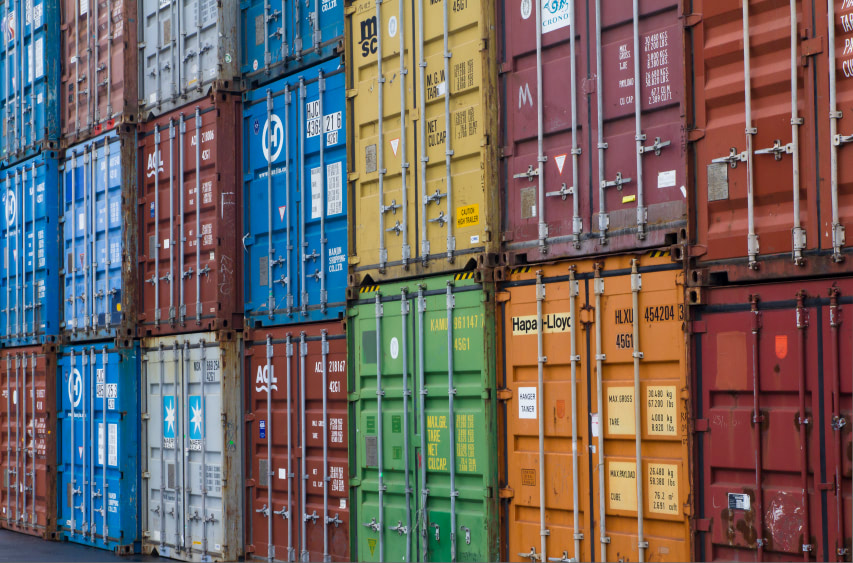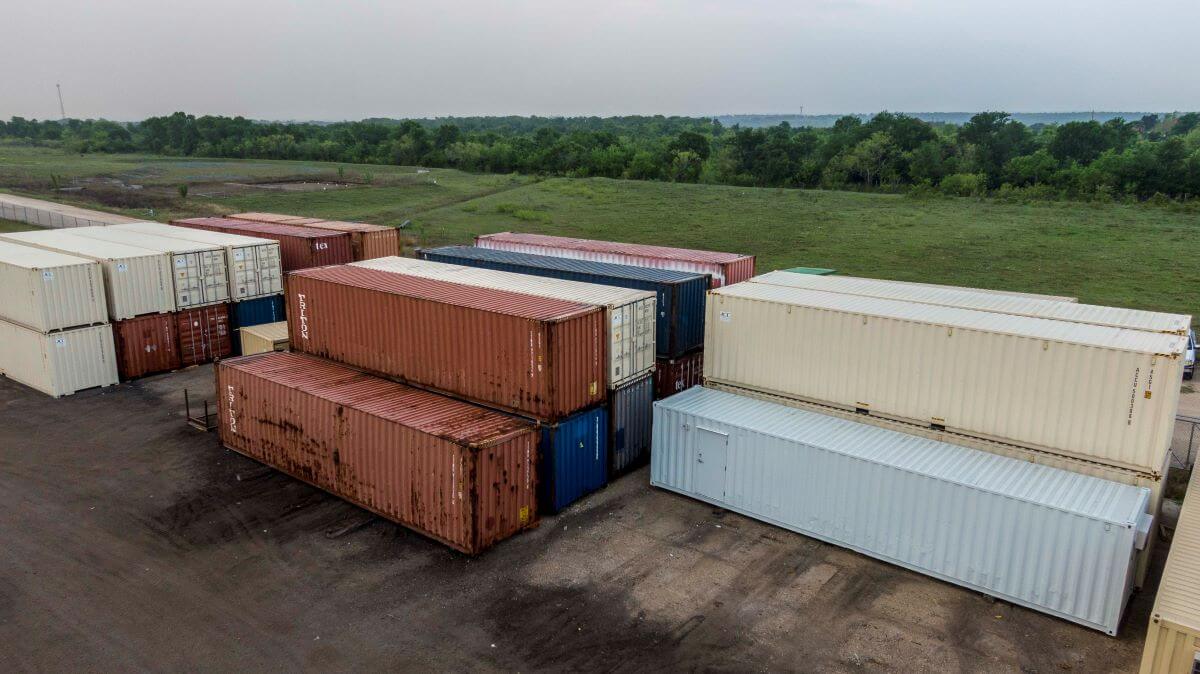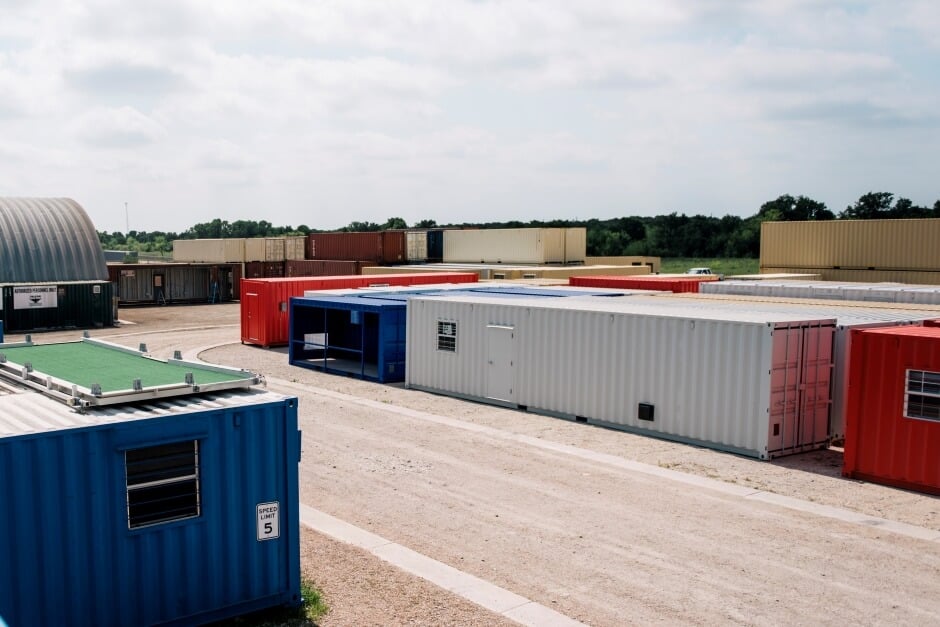Where Do Shipping Containers Come From?
 Becca Hubert | Jul 2, 2025
Becca Hubert | Jul 2, 2025

It’s a question we hear all the time from our customers, family, and even friends when we tell them what we do at Falcon Structures:
“Where do all those shipping containers actually come from?”
It’s a great question. From the outside, it seems like they just appear—steel boxes ready to be transformed into something new. But before a shipping container becomes a modified office, equipment enclosure, or even a bathroom, it has quite the journey.
If you’ve ever wondered about the origin story of these conex boxes, read on.
Want a quick primer? Watch this for a short overview of container origins and the difference between one-trip and used.
Where are shipping containers made?
Before one-trip containers land at Falcon’s facility, they start their life overseas.
In fact, about 85% of all shipping containers are manufactured in China, where production is centralized near major ports. Of the top 10 shipping container manufacturers globally, six are based in Asia.
How are shipping containers made?
Shipping containers are built for durability—able to handle rough seas, heavy loads, and harsh weather. The process starts with large steel sheets, which are:
- Cut and corrugated to add strength
- Welded into a box shape with reinforced frames
- Outfitted with marine-grade plywood floors over steel crossmembers
- Equipped with doors, locking mechanisms, and corner castings for stacking and securing during transport
- Painted and sealed to withstand corrosion
Each container is then quality-tested to meet the rigorous demands of global shipping.
Are all shipping containers created equally?
Most are built to ISO standards, a global benchmark established in the 1960s to streamline international trade. ISO containers are designed with standard sizes and connection points, making it easier for shipping lines, ports, and cranes to handle them interchangeably.
In 2019, ISO containers were officially recognized as commercial building materials in the 2021 International Building Code (IBC)—a milestone effort led in part by Falcon Structures’ CEO and Co-Founder, Stephen Shang.
What happens after a shipping container is created?
A whopping 80% of global goods trade is transported by sea. So once a container is manufactured, it’s likely to be loaded with goods—everything from electronics, furniture, food, and raw materials—then exported by way of a shipping company.
Some of the biggest names in global container shipping include:
- Maersk (Denmark)
- COSCO Shipping (China)
- Evergreen Marine (Taiwan)
- MSC – Mediterranean Shipping Company (Switzerland), which is currently the largest and operates over 850 vessels and more than 5 million TEUs (twenty-foot equivalent units).

What happens to containers after transporting cargo?
While many are reused for continued shipping, others end up sitting idle, abandoned at ports or left unused due to trade imbalances between countries. Many of these are one-trip containers, conex boxes that have made just one trip overseas carrying goods, but are impractical to ship back overseas empty. Rather than letting them go to waste, companies like Falcon and other modified container manufacturers create new uses for these durable boxes outside of global trade.
From cargo to construction, the journey of a shipping container doesn’t have to end at the dock. At Falcon, we’re proud to extend its lifecycle and build a better world—one repurposed container at a time.
Curious about containers?
They’re kind of our thing.
Follow us on LinkedIn and subscribe to our monthly newsletter for more container insights, modification possibilities, and industry news.
SUBSCRIBE
- Shipping Container Modifications
- How-Tos
- Workspace
- Commercial Construction
- Multi-Container Buildings
- Storage Solutions
- Industrial Enclosures
- Bathrooms & Locker Rooms
- Oil & Gas
- Climate Control
- Green Building
- Living Space
- Industry Insight
- Military & Training Facilities
- Water Treatment Solutions
- Energy
THINK INSIDE THE BOX®
WITH OUR BLOG
Get everything from shipping container basics, to detailed how-tos and industry news in our weekly blog. Stay inspired and subscribe!
RELATED BLOGS

Shipping Container History: Transportation to Container Workspaces
Becca Hubert | May 15, 2024 | 3 min read
READ MORE

Are Shipping Containers Waterproof?
Becca Hubert | Nov 27, 2024 | 4 min read
READ MORE

Guide to Shipping Container Sizes & Types
Becca Hubert | Dec 13, 2023 | 4 min read
READ MORE
